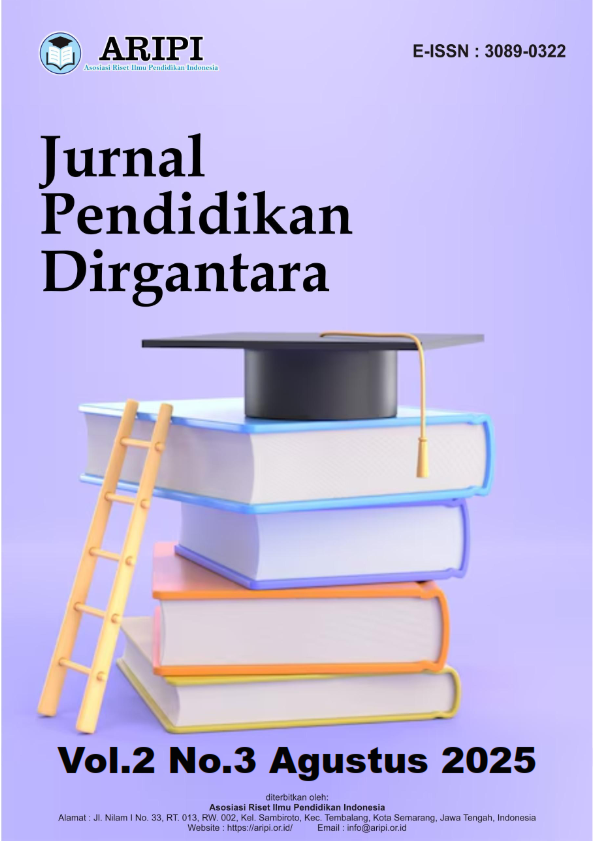An Analysis of the Implementation Duolingo Application in Teaching English Skills in Eleventh Grade at SMA Negeri 1 Tasifeto Timur
DOI:
https://doi.org/10.61132/jupendir.v2i3.542Keywords:
AI, Duolingo, English Learning, Gamification, Media LearningAbstract
This study examines the implementation of the Duolingo application in teaching English skills to eleventh-grade students at SMA Negeri 1 Tasifeto Timur. With the increasing integration of technology in education, this research aims to evaluate the effectiveness of Duolingo as a tool for enhancing language acquisition and engagementt among learners. Through a mixed-methods approach, the study analyzes student performance, engagement levels, and overall satisfaction with the application compared to traditional teaching methods. The results indicate a significant improvement in vocabulary retention, grammatical proficiency, and conversational skills among students utilizing Duolingo. Additionally, qualitative feedback highlights the app's user-friendly interface and gamified learning experience as motivating factors.
References
Ambarwati, L., Nabatajoe, R., Barli, R. K., & Hutagalung, R. T. (2022). The effectiveness of Duolingo in learning English. In Seminar Nasional Ilmu Pendidikan dan Multi Disiplin, 5(01).
Barrot, J. S. (2022). Social media as a language learning environment: A systematic review of the literature (2008–2019). Computer Assisted Language Learning, 35(9), 2534–2562. https://doi.org/10.1080/09588221.2020.1839504
Denny, E., & Weckesser, A. (2022). How to do qualitative research? Qualitative Research Methods. BJOG: An International Journal of Obstetrics & Gynaecology, 129(7), 1166. https://doi.org/10.1111/1471-0528.17078
Li, Z., Bonk, C. J., & Zhou, C. (2024). Supporting learners’ self-management for self-directed language learning: A study within Duolingo. Interactive Technology and Smart Education, 21(3), 381–402. https://doi.org/10.1108/ITSE-06-2023-0097
Muftah, M. (2024). Impact of social media on learning English language during the COVID-19 pandemic. PSU Research Review, 8(1), 211–226. https://doi.org/10.1108/PRR-03-2023-0018
Rajendran, T., & Yunus, M. M. (2021). A systematic literature review on the use of mobile-assisted language learning (MALL) for enhancing speaking skills among ESL and EFL learners. International Journal of Academic Research in Progressive Education and Development, 10(1), 586–609. https://doi.org/10.6007/IJARPED/v10-i1/8989
Shadiev, R., & Yang, M. (2020). Review of studies on technology-enhanced language learning and teaching. Sustainability, 12(2), 524. https://doi.org/10.3390/su12020524
Shortt, M., Tilak, S., Kuznetcova, I., Martens, B., & Akinkuolie, B. (2023). Gamification in mobile-assisted language learning: A systematic review of Duolingo literature from public release of 2012 to early 2020. Computer Assisted Language Learning, 36(3), 517–554. https://doi.org/10.1080/09588221.2021.2005973
Wulantari, N. P., Rachman, A., Sari, M. N., Uktolseja, L. J., & Rofi’i, A. (2023). The role of gamification in English language teaching: A literature review. Journal on Education, 6(01), 2847–2856.
Zhang, W. (2022). The role of technology-based education and teacher professional development in English as a foreign language classes. Frontiers in Psychology, 13, 910315. https://doi.org/10.3389/fpsyg.2022.910315
Zhou, Y., & Wei, M. (2018). Strategies in technology-enhanced language learning. Studies in Second Language Learning and Teaching, 8(2), 471–495. https://doi.org/10.14746/ssllt.2018.8.2.12
Downloads
Published
How to Cite
Issue
Section
License
Copyright (c) 2025 Jurnal Pendidikan Dirgantara

This work is licensed under a Creative Commons Attribution-ShareAlike 4.0 International License.




